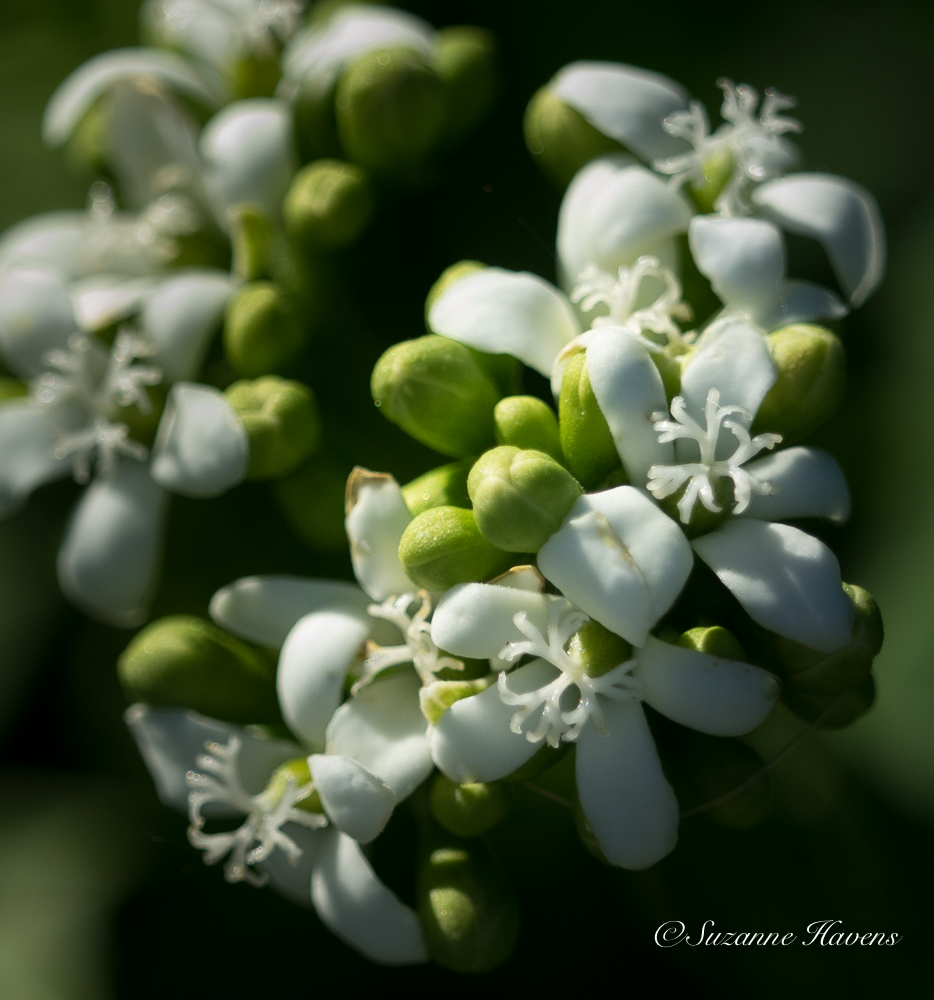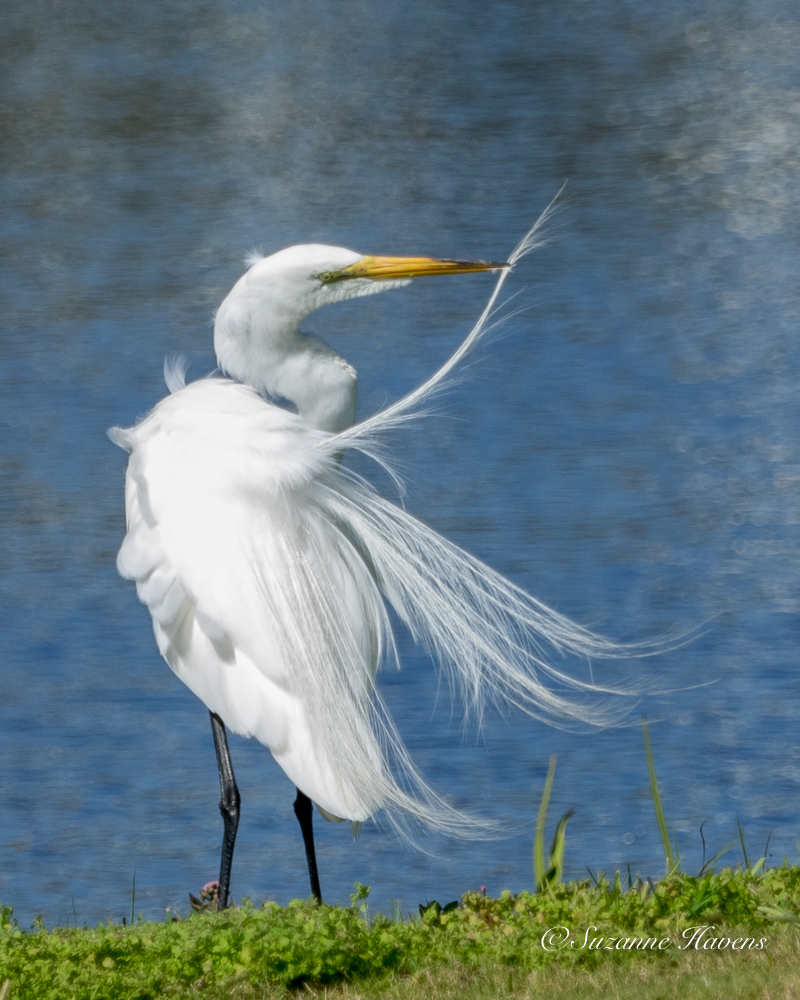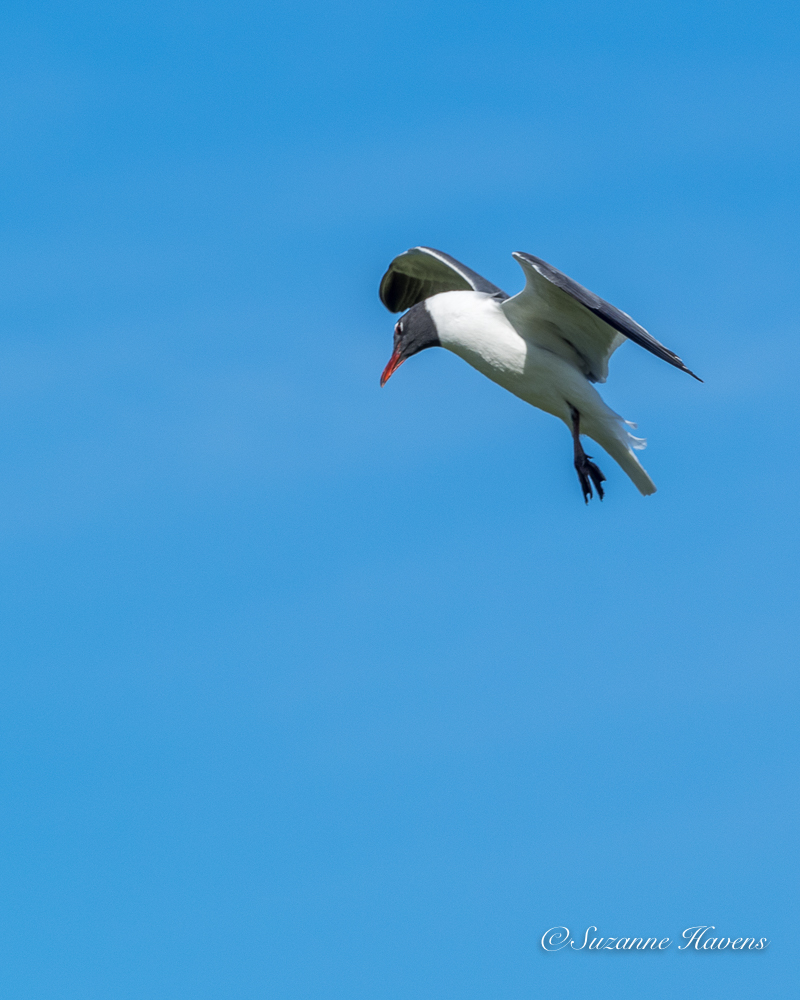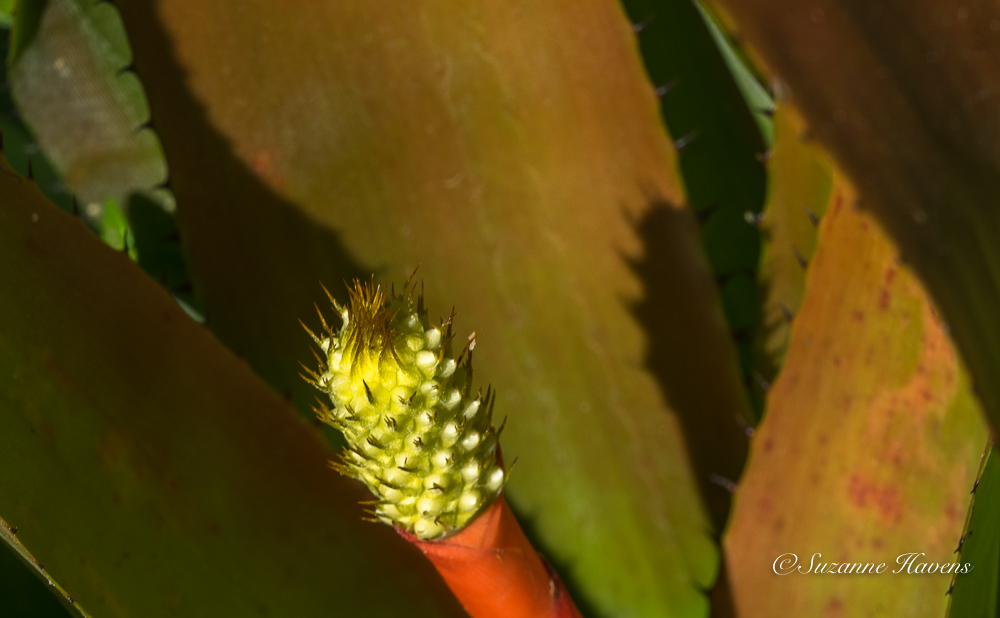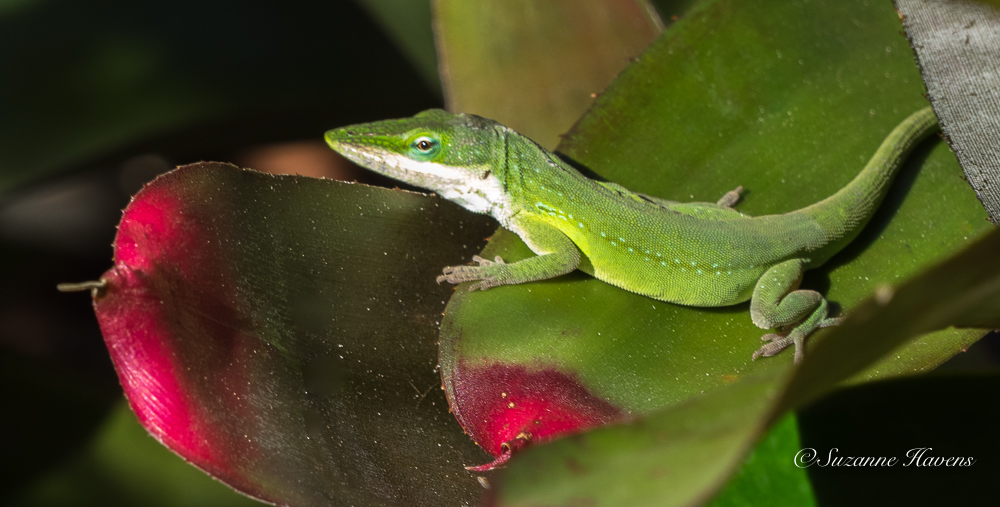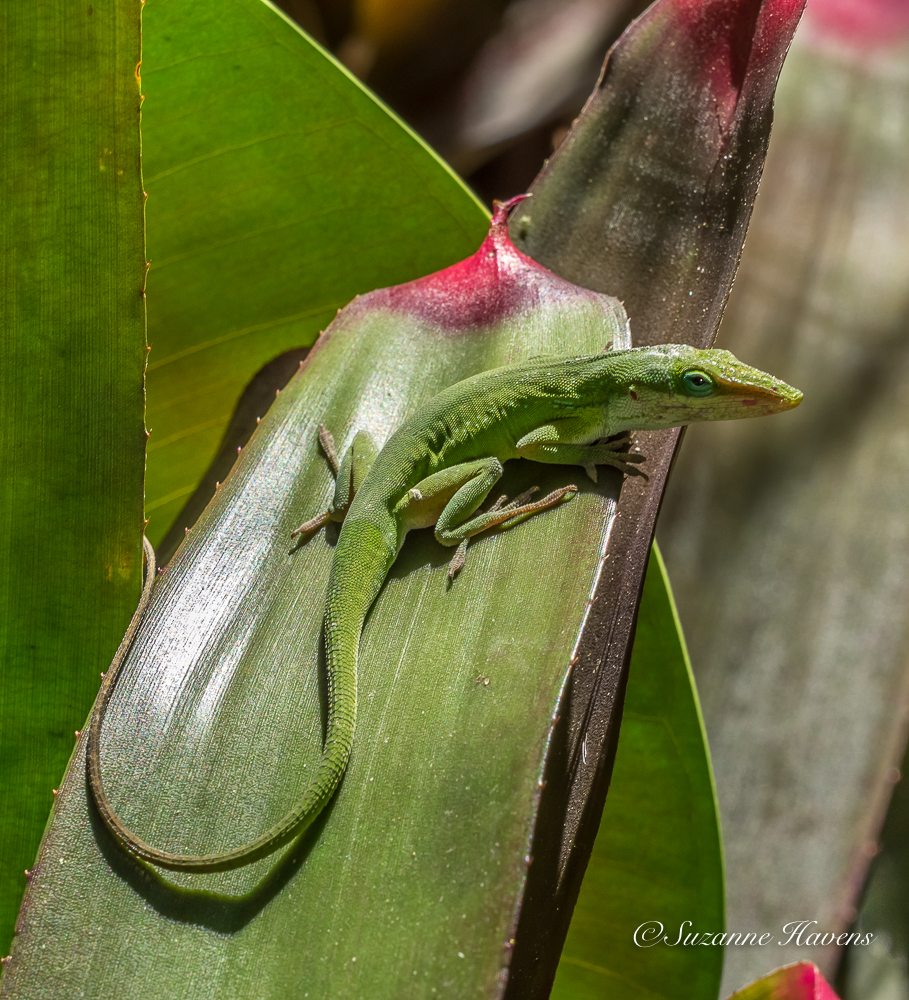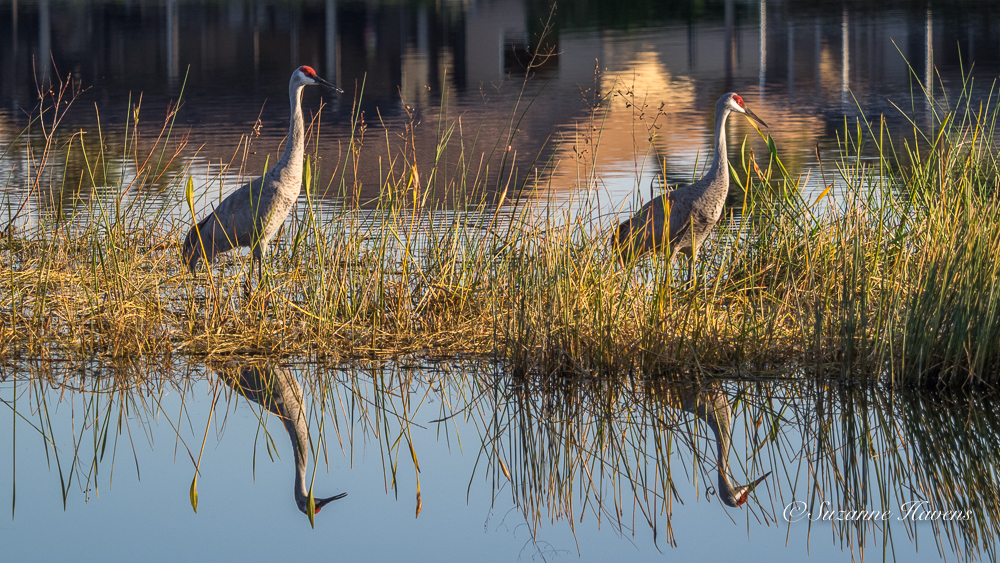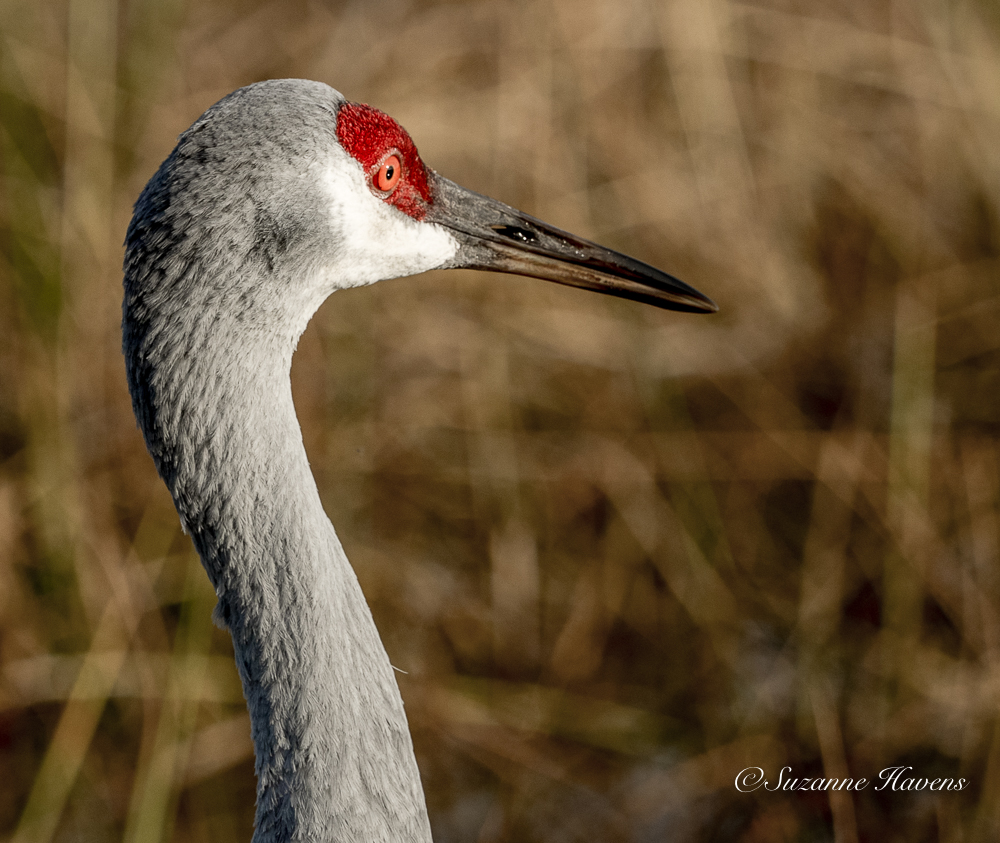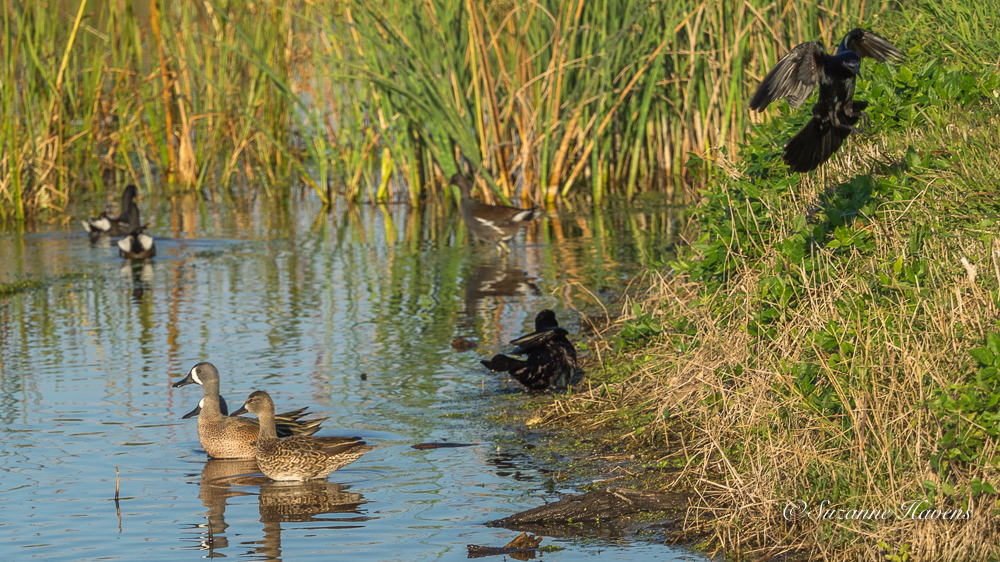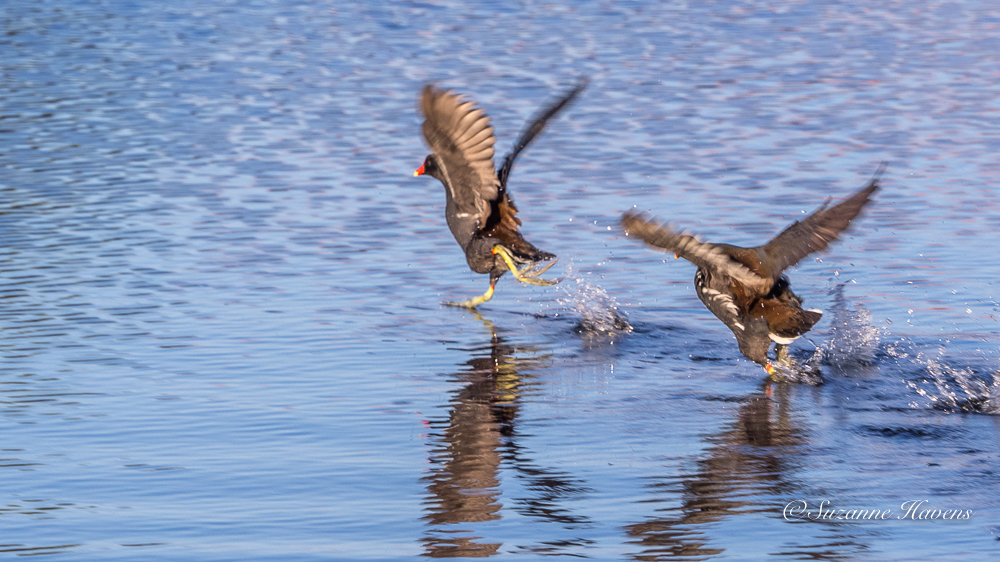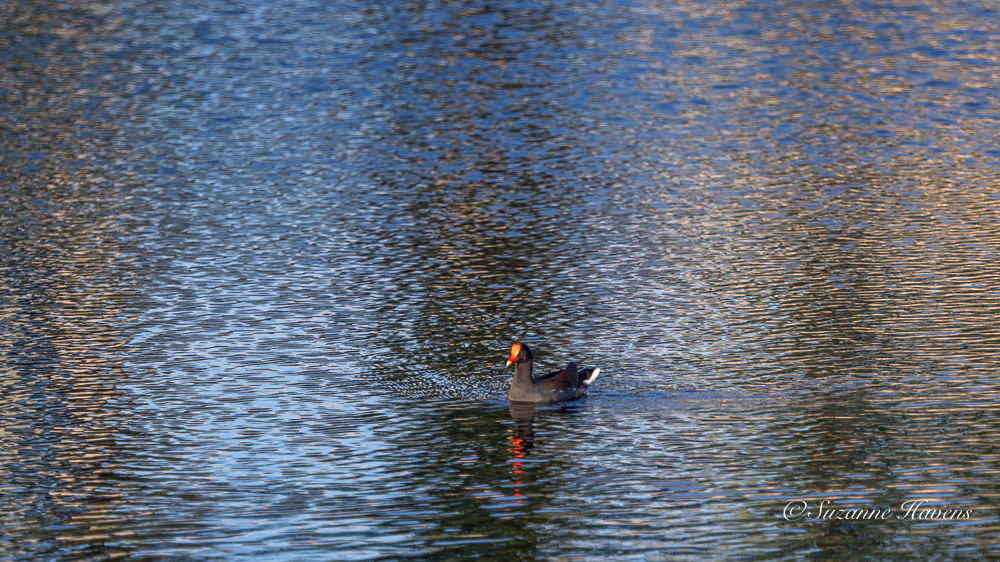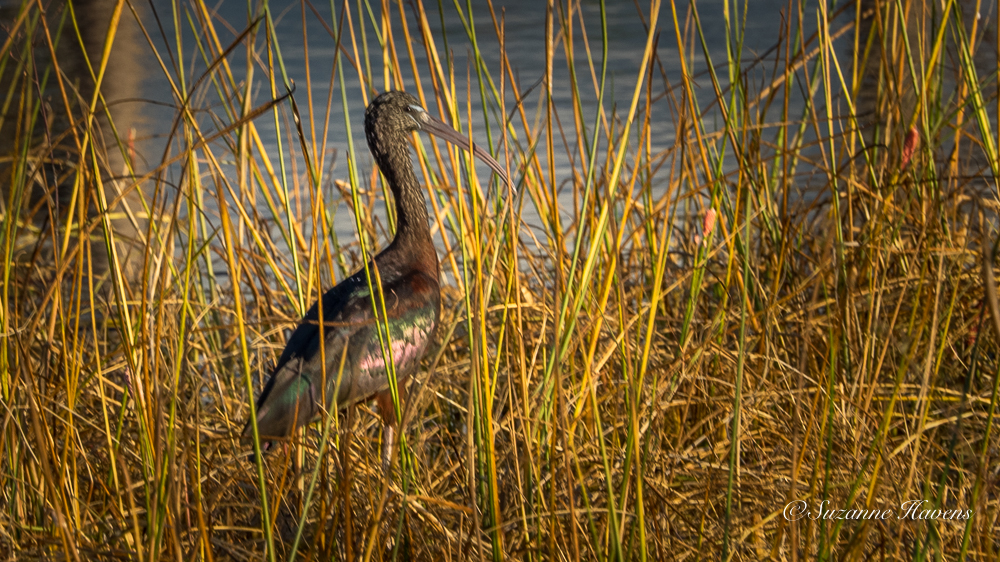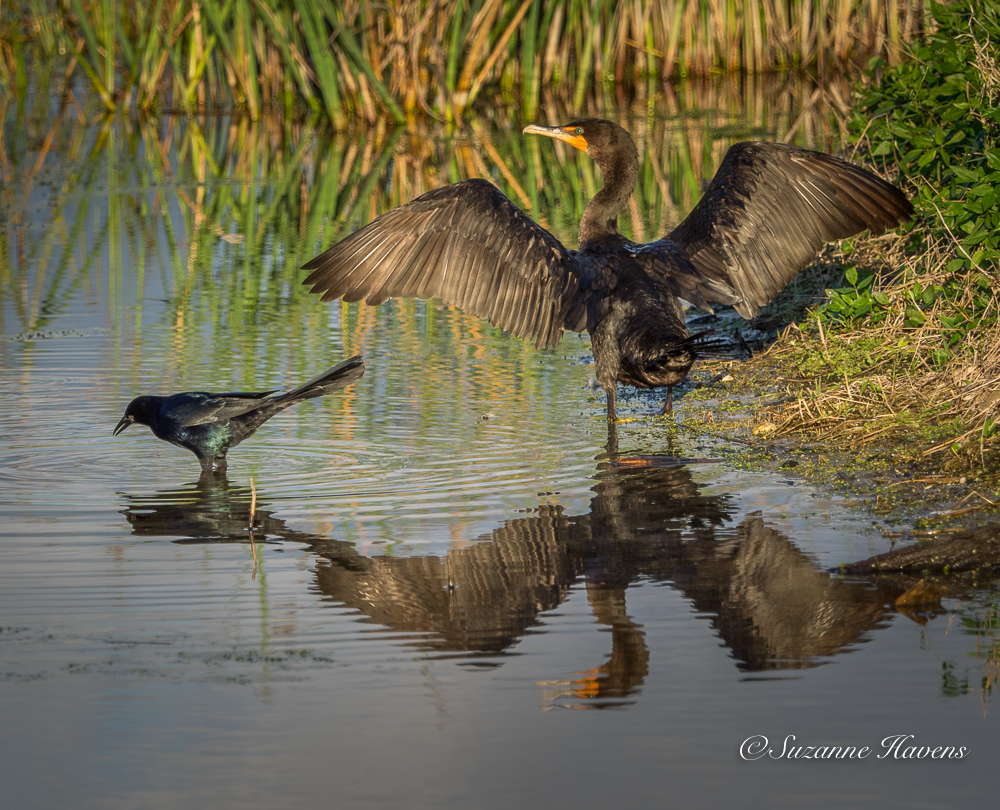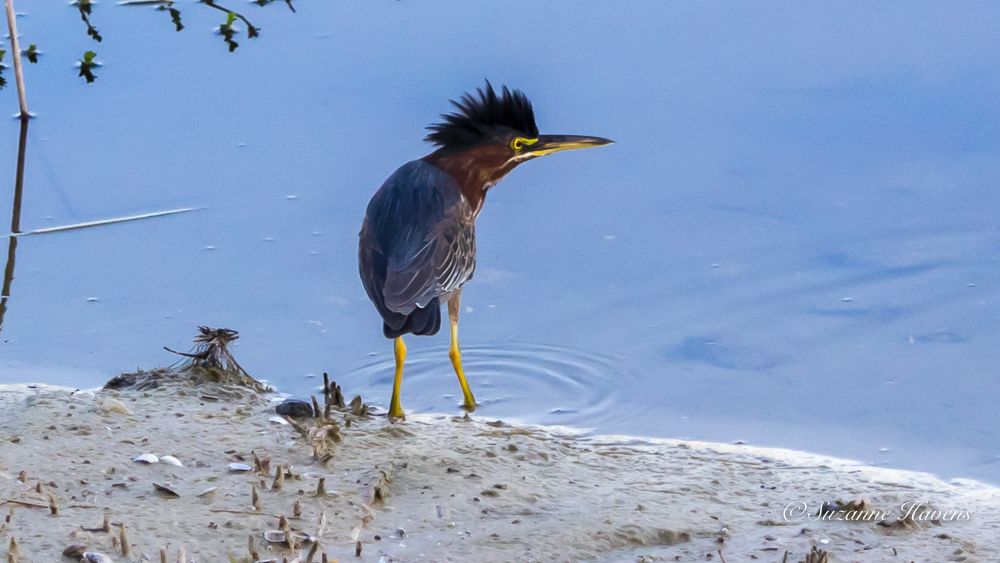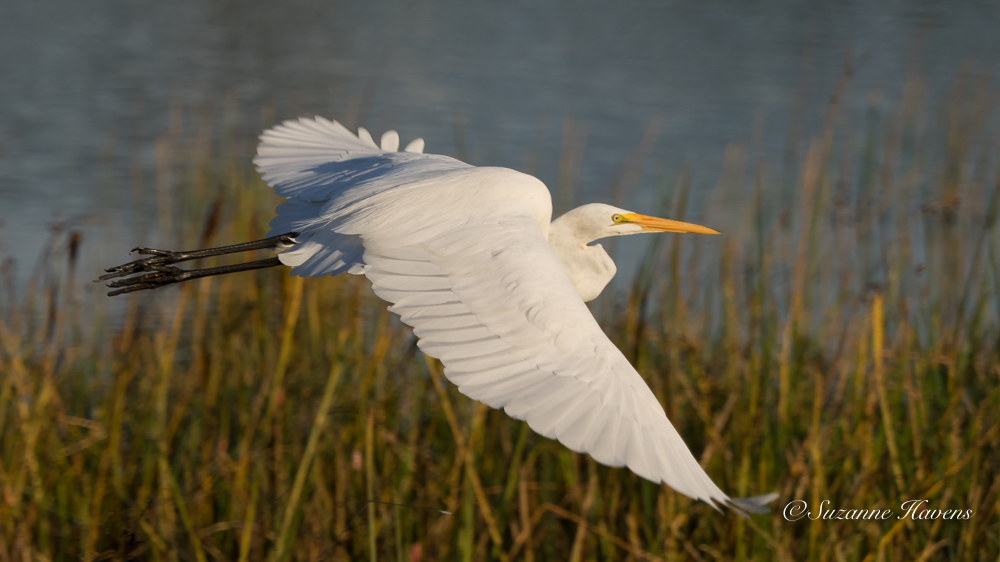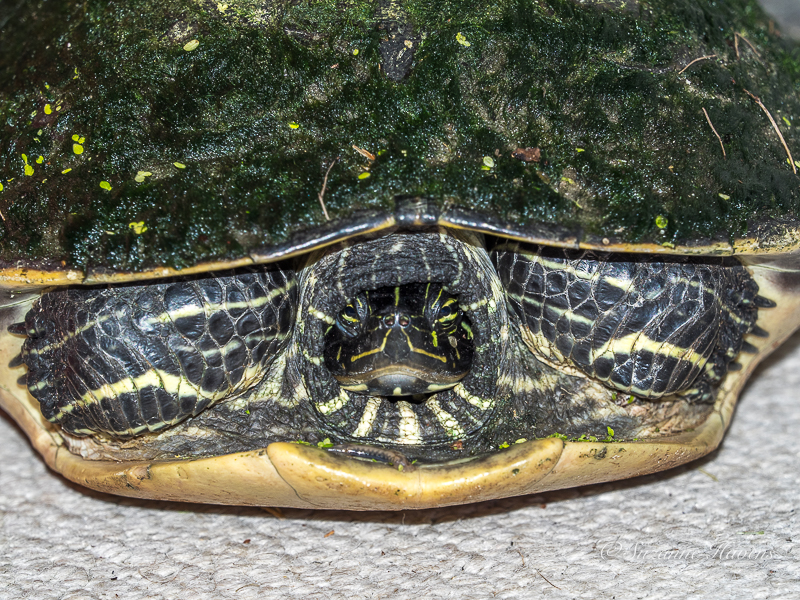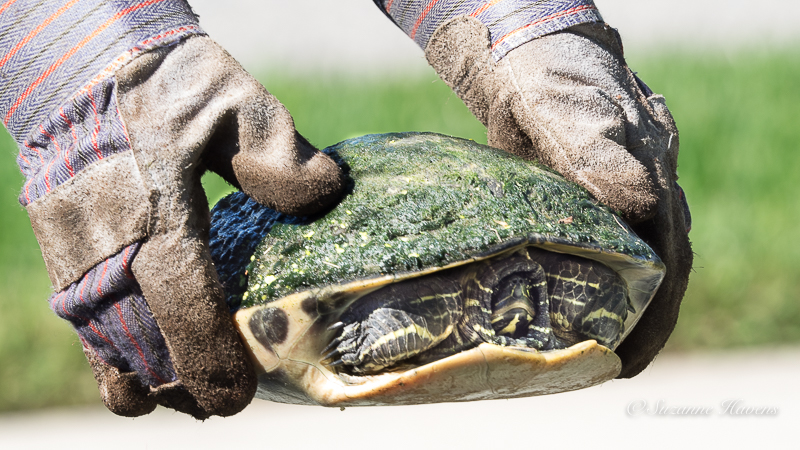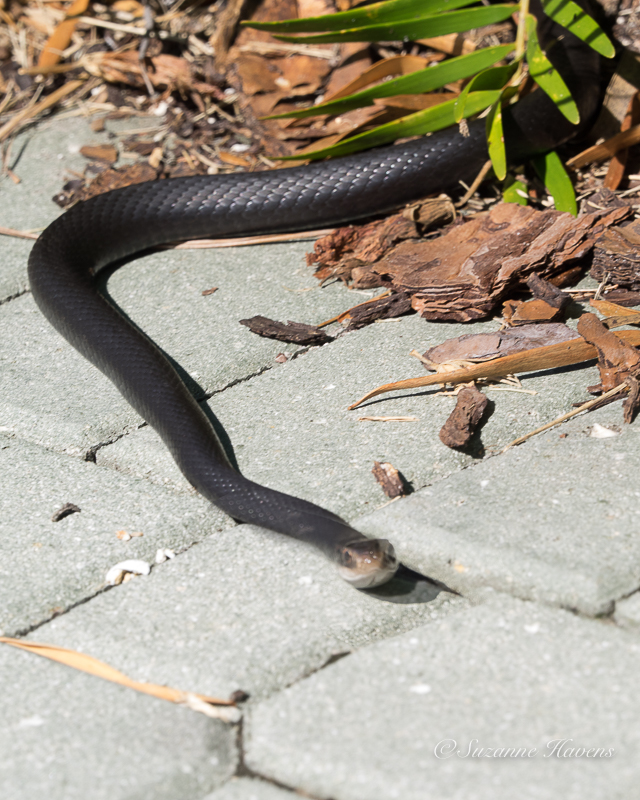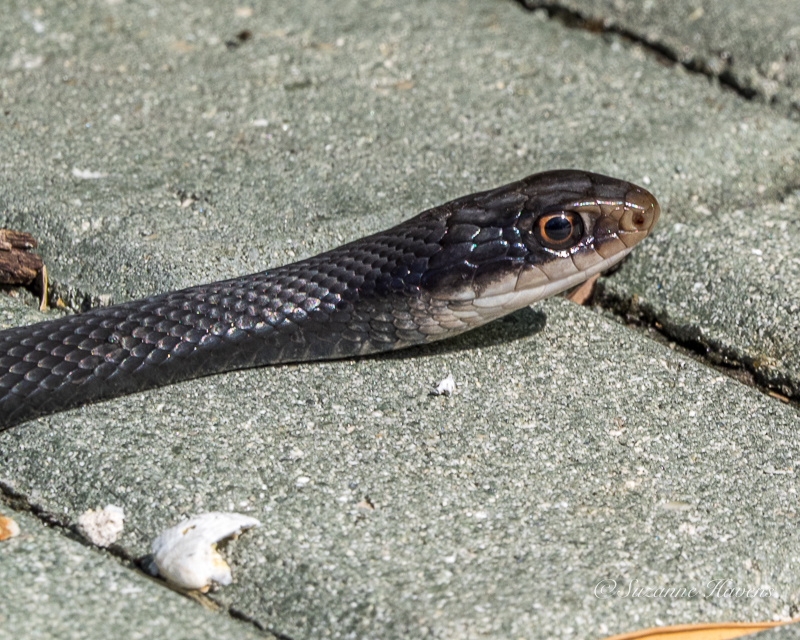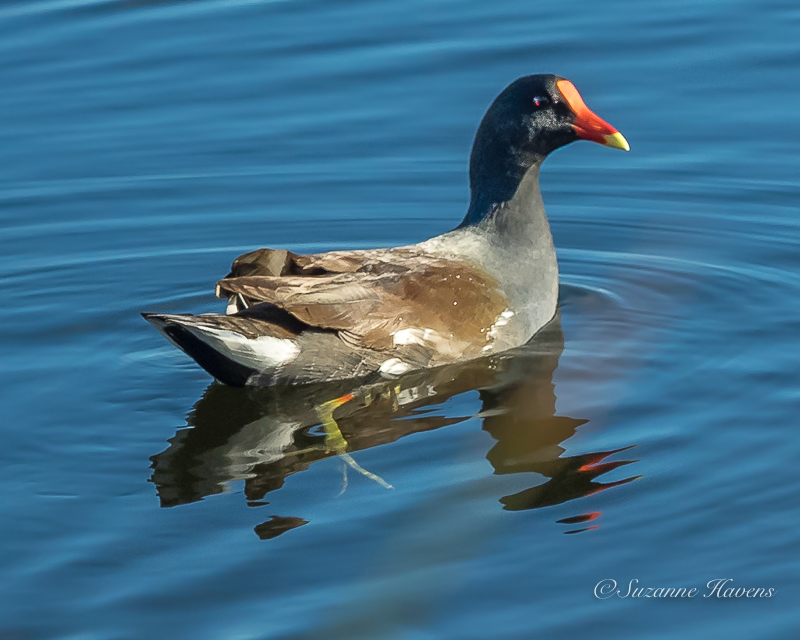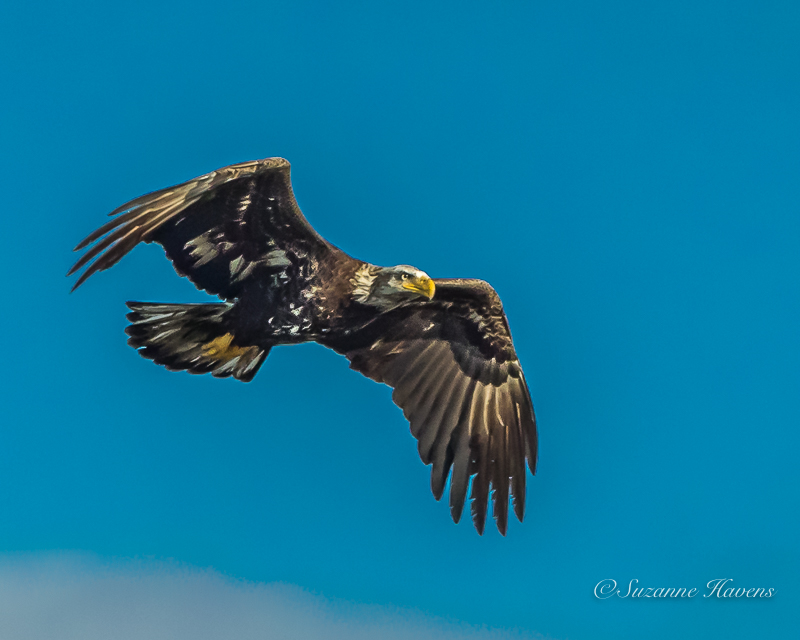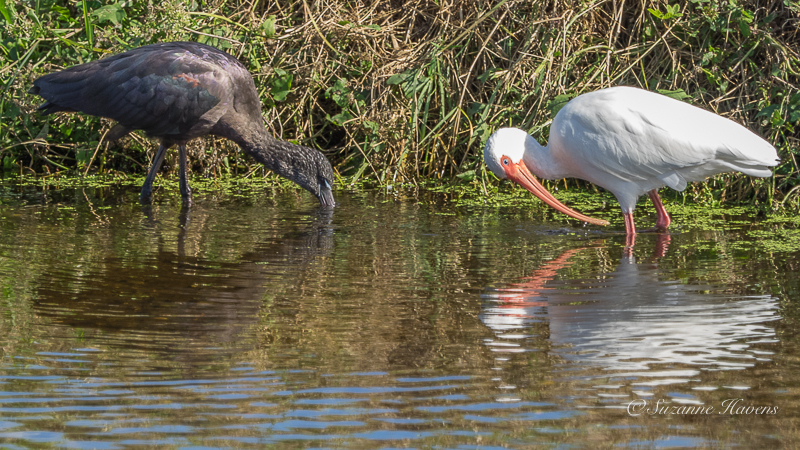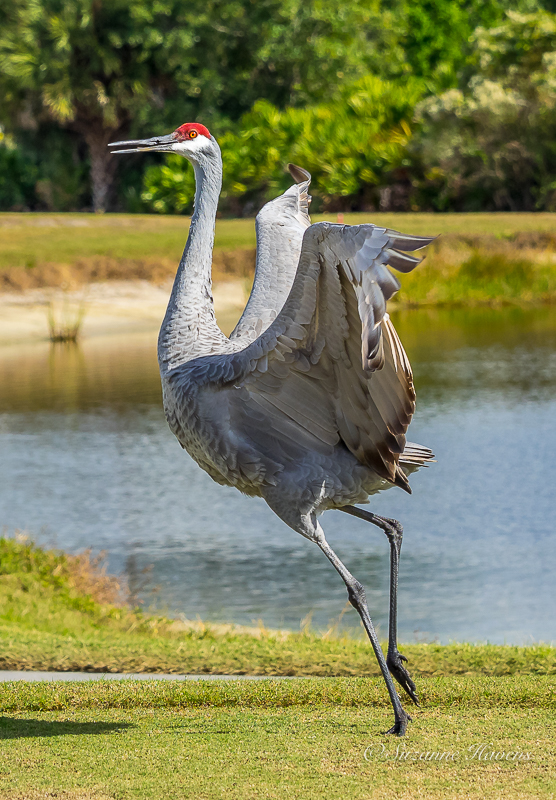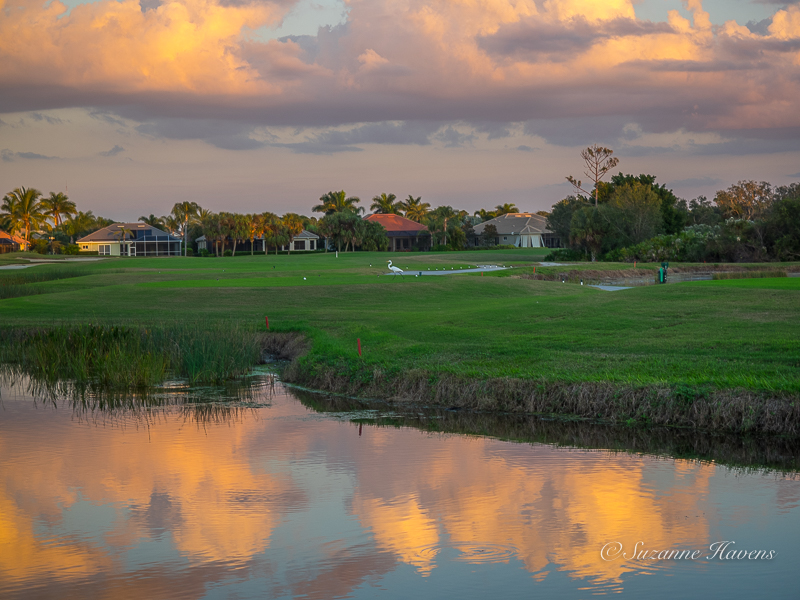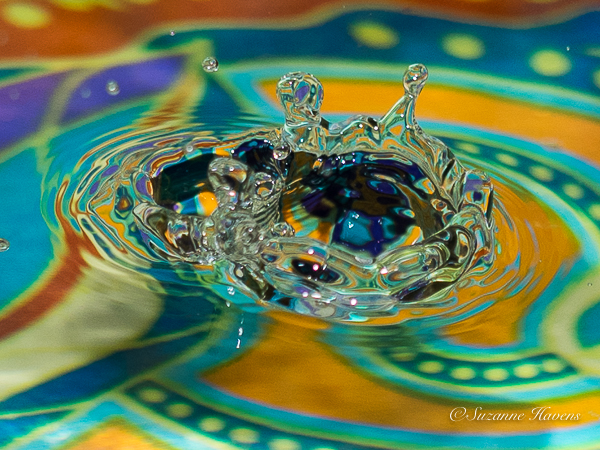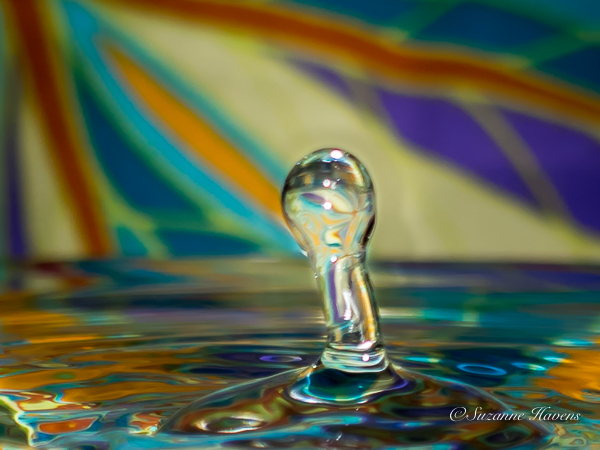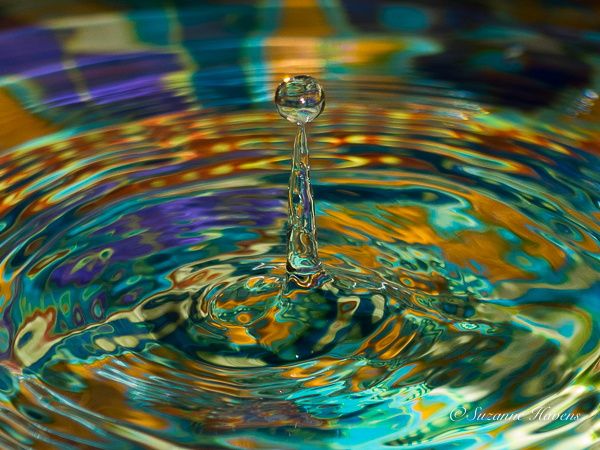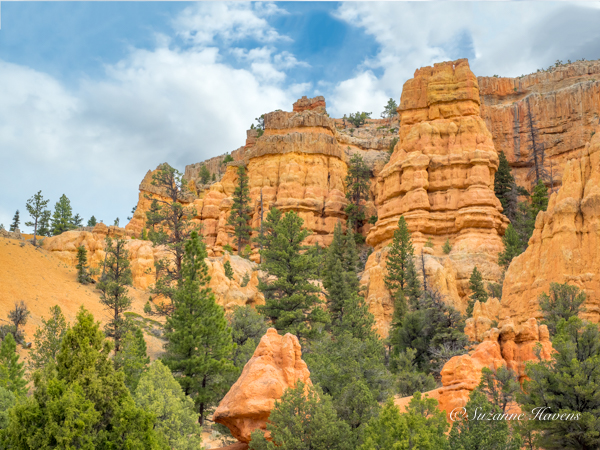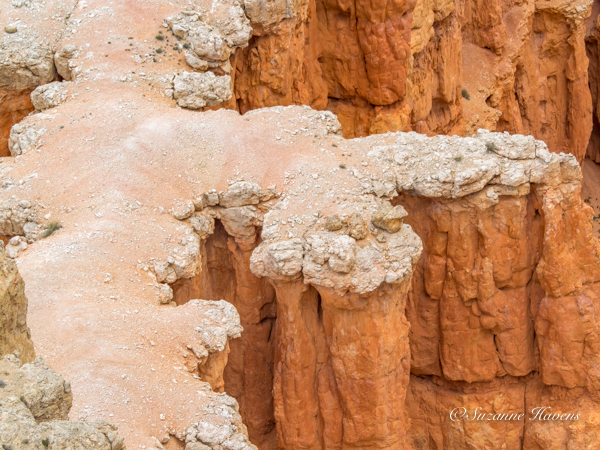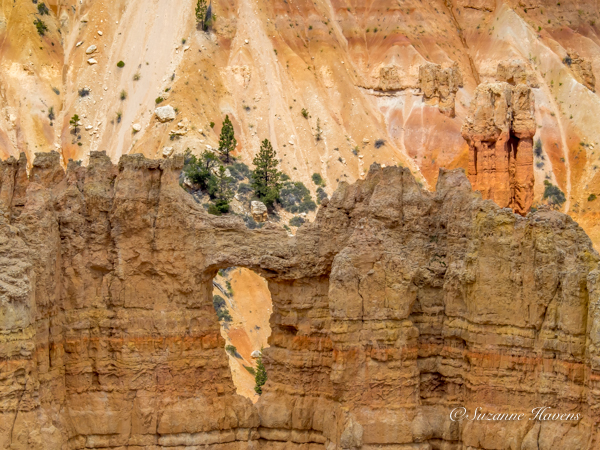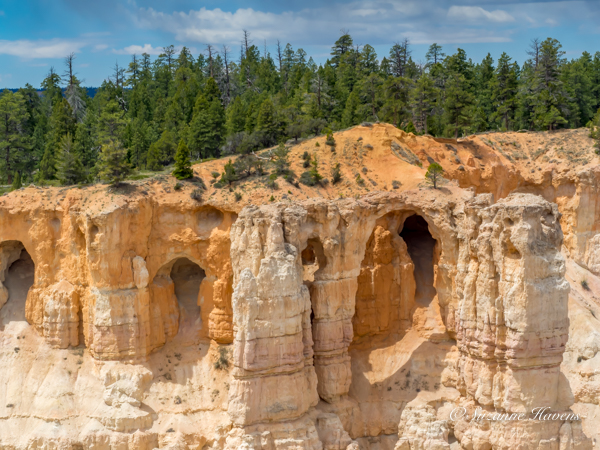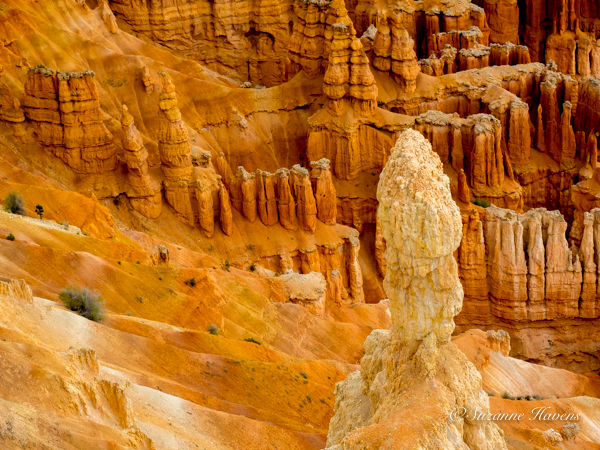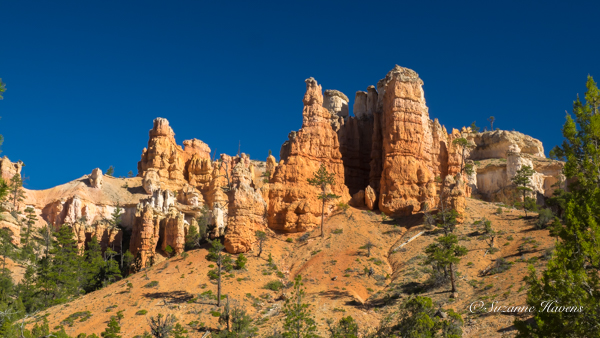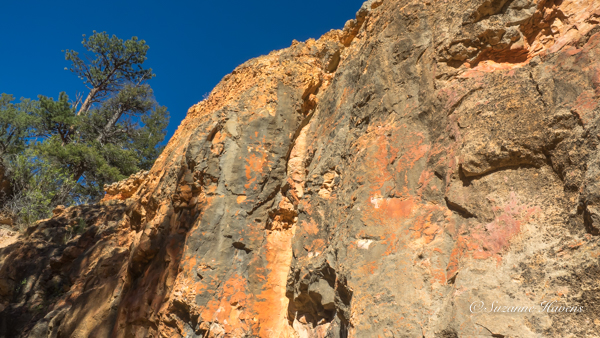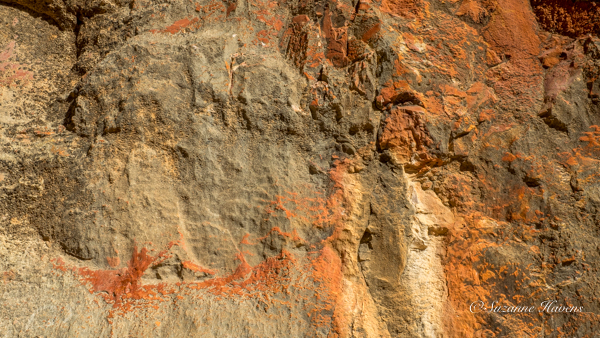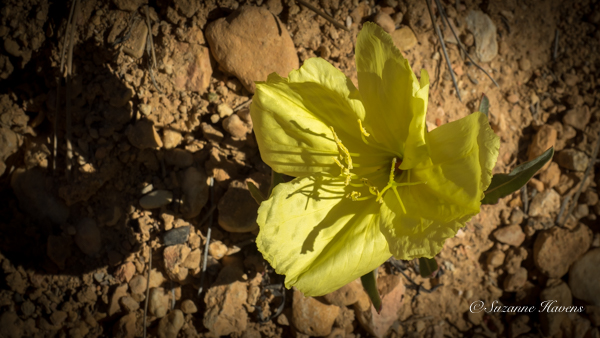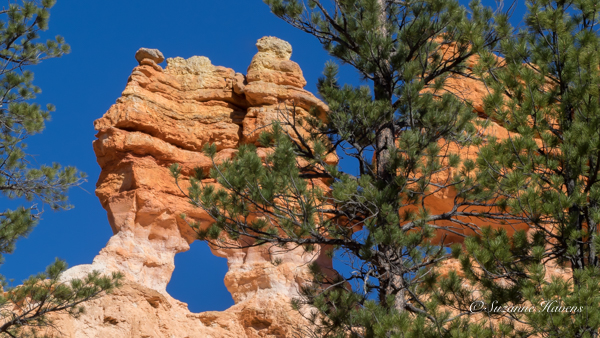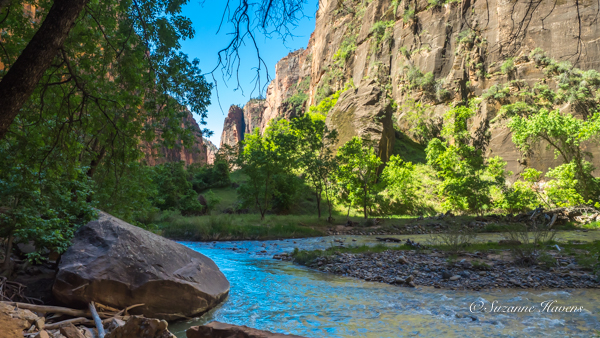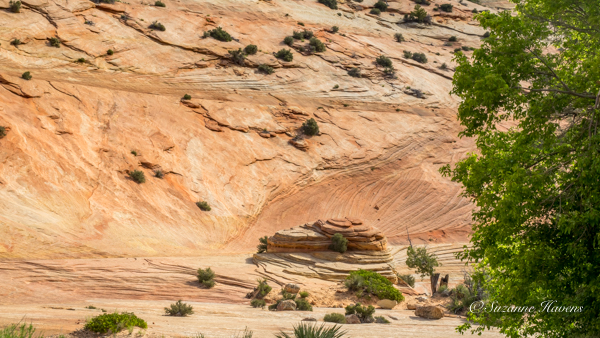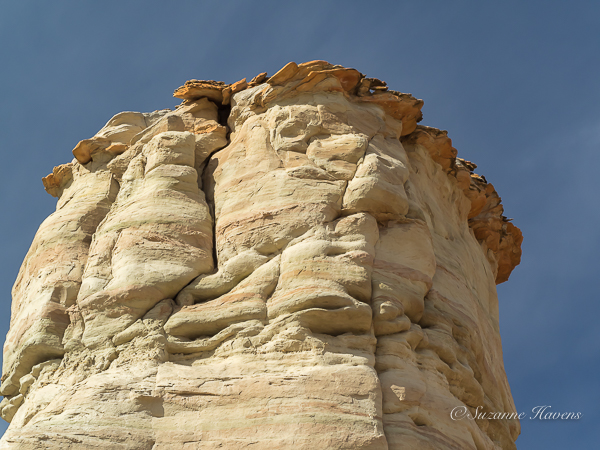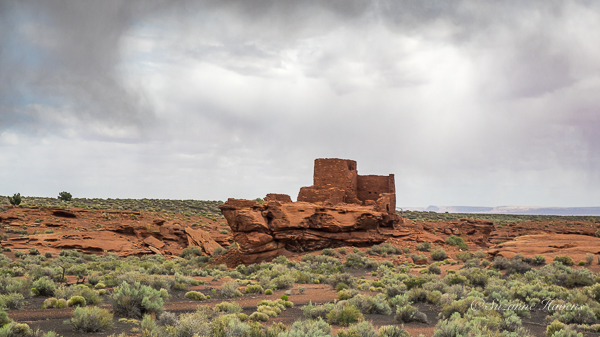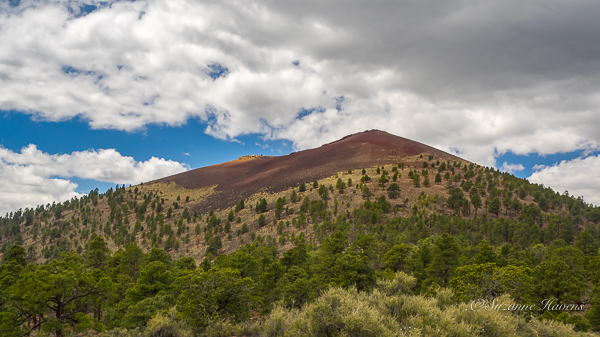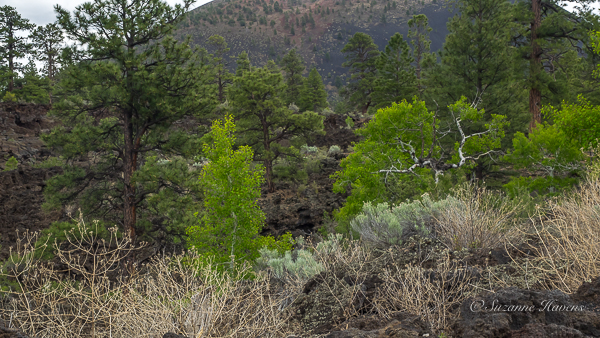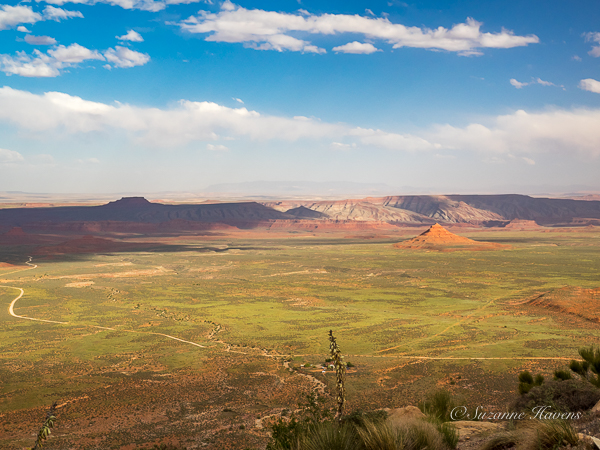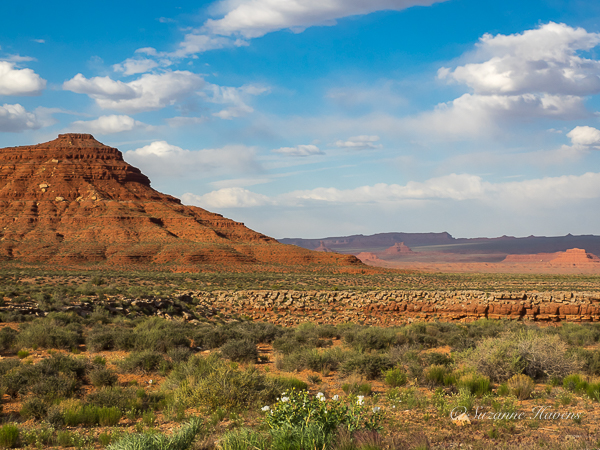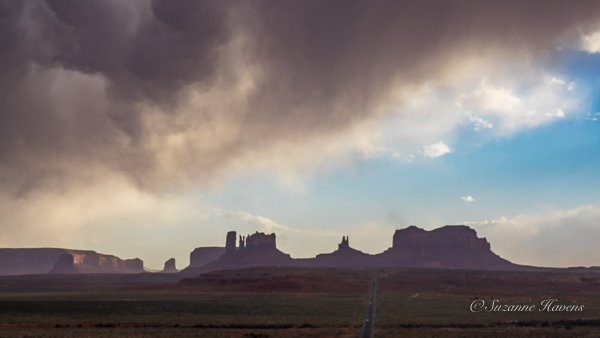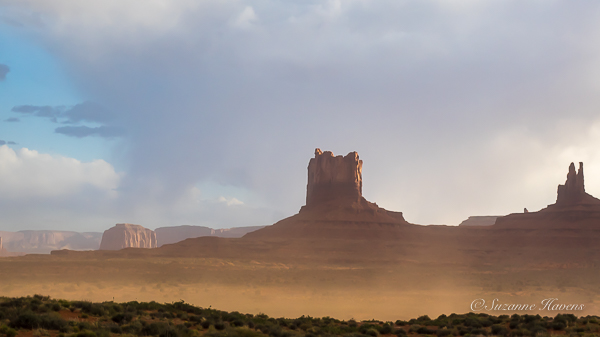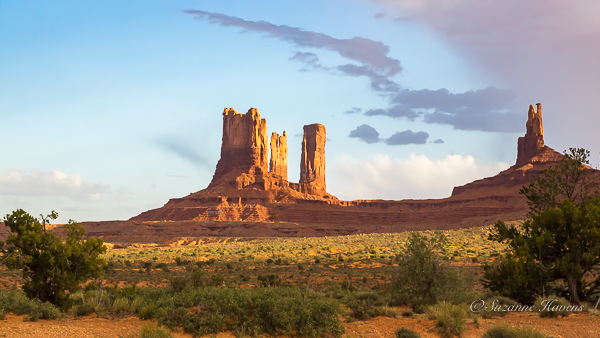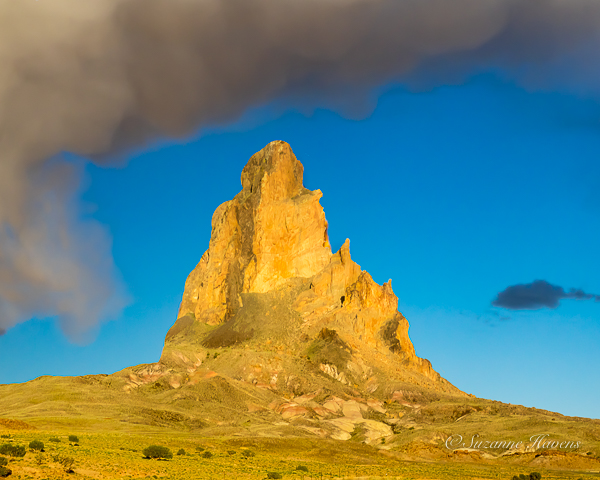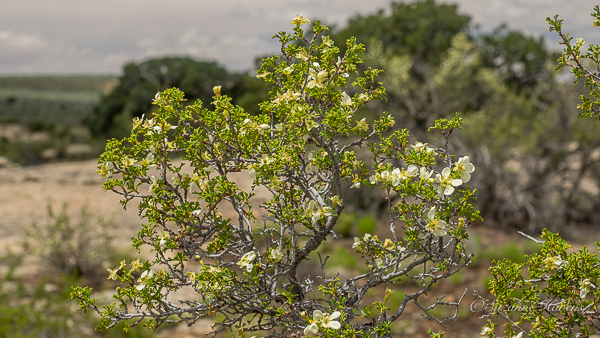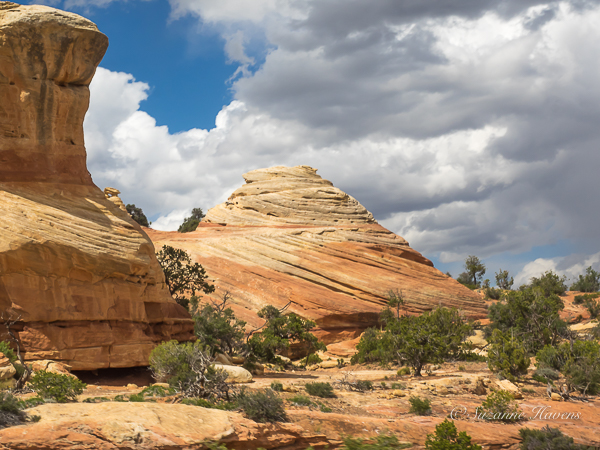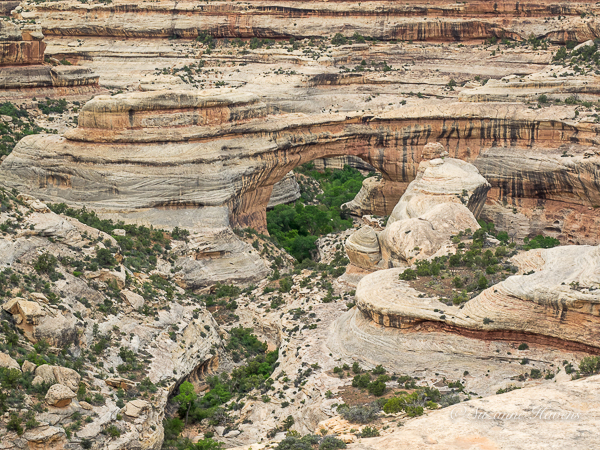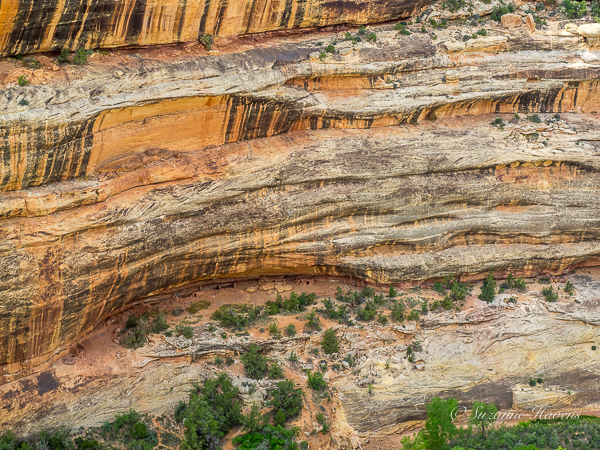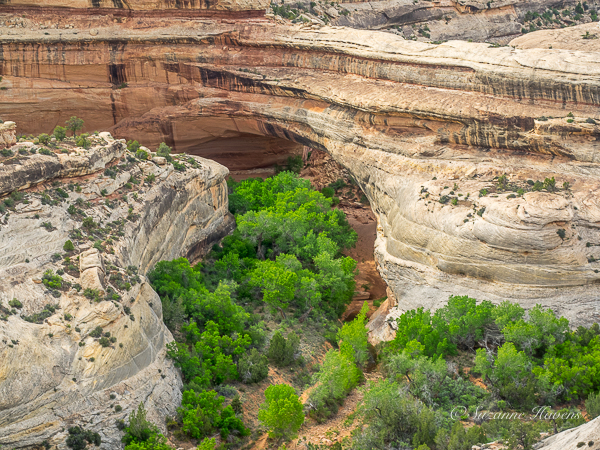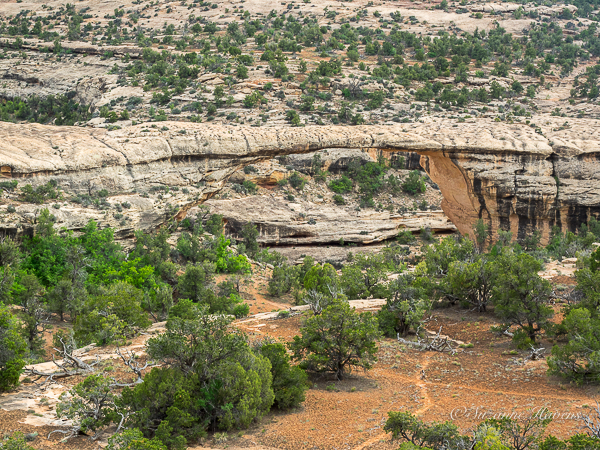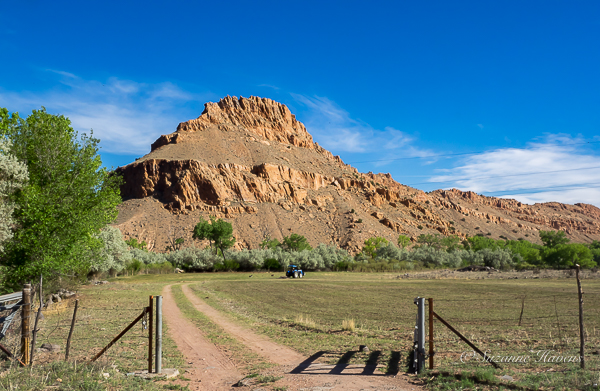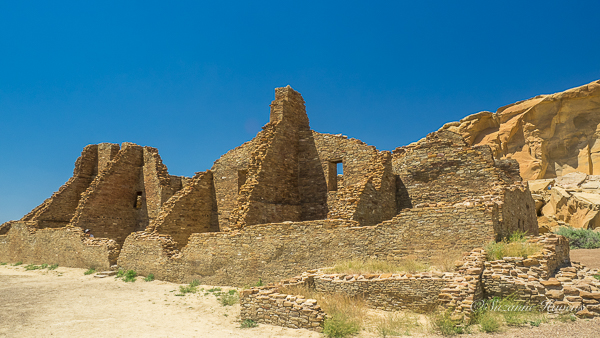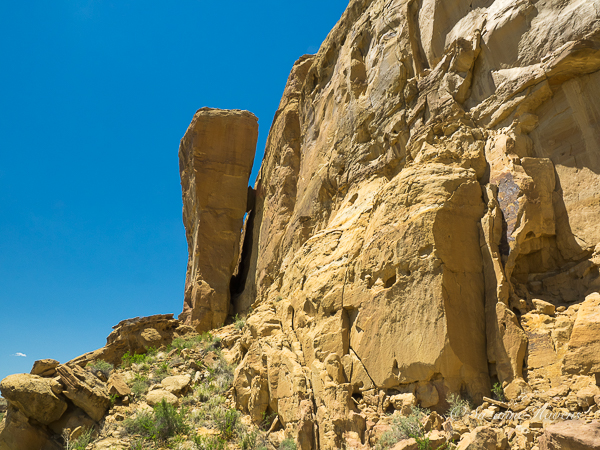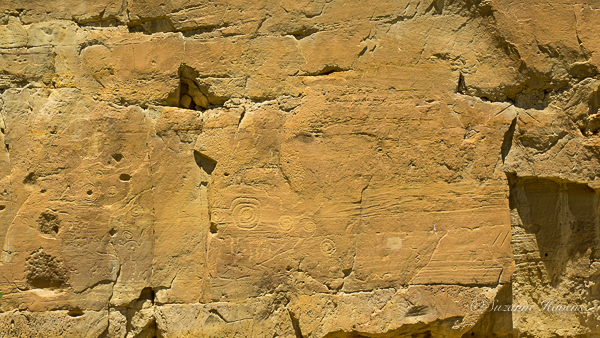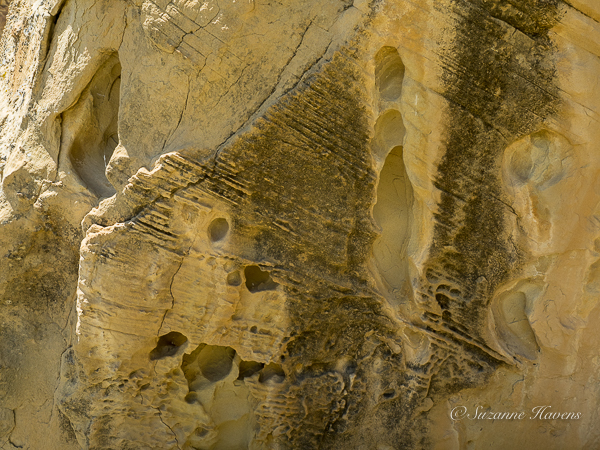In winter various birds congregate on the ponds just behind our house.
One photographer complained that he had to travel 50 miles to photograph birds and some people find them in their backyard! I am fortunate to live by two ponds, a nature area, and a golf course. Sometimes I see something and go for my camera. Other times I take the camera on a short walk and see what I can find.
I attended a workshop where all the participants took turns shooting drops of water falling into a crystal bowl with colorful cloth under and behind the bowl. Working with a flash we tried to capture the droplets in focus and well lighted. I had no idea how entertaining and challenging the process would be and how beautiful and varied the results would be. I may play with this again in my studio with a close-up lens, a tripod, sustained lighting, and various bowls and backdrops.
I didn’t know until I read up on Bryce Canyon that it is near the top of “The Grand Staircase.” Thinking of the bottom of the Grand Canyon as the base of the staircase, sedimentary rocks “recount a history of 525 million years.” The so-called pink cliffs of Bryce (that I think of as orange) are made of sandstone from sedimentation. “Massive tectonic plate activity from 20 to 15 million years ago began to thrust up a tremendous swath of the earth’s crust” nearly two miles to form the 130,000-square-mile Colorado Plateau. (Bryce Canyon National Park brochure) This tectonic force pushed up unevenly causing the exposed layers to appeal diagonal instead of horizontal. Geologists have identified the content, named the layers and dated them.
Because of the high altitude of Bryce ( 8,000 to 9,000 feet), the air does not retain moisture well. Therefore, the temperature can vary over 40 degrees in a single day. About 180 days a year the temperatures swing from below freezing at night to warm afternoons. This means that snow melts, seeps into crevices, turns to ice, cracks the rock around it and causes erosion. This frost-wedging shapes the rock walls into fins, opens windows, and when the tops of the windows break, limestone pillars. Here is a small sample of the fascinating scenery from the “Bryce Amphitheater.”
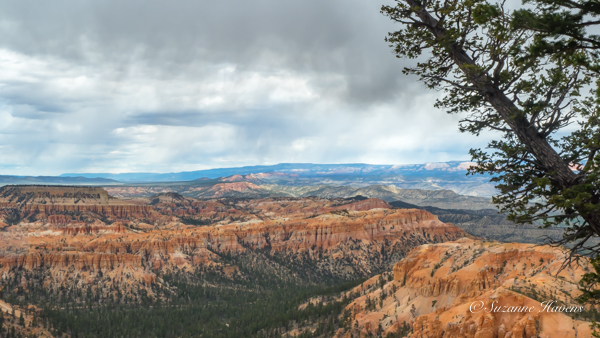
A leaning erergreen tree frames the wide-angle view of the canyon, trees and mountains in the distance. Rain intermittingly fell throughout the day.
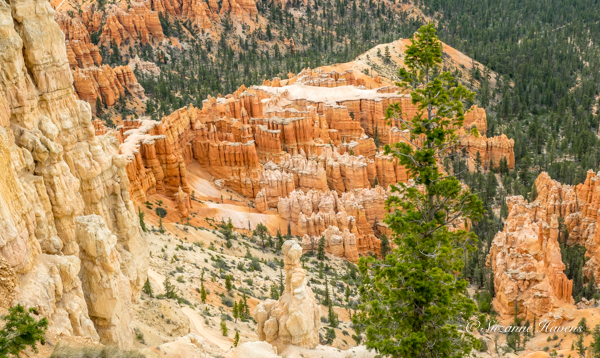
The rock color varies from cream to peach to orange. A crust covers some of the canyon wall fins. Limestone sand is carried down the canyon. A pillar called a hoodoo appears in the foreground. Ancient Puebloans regarded hoodoos as ancestors turned to stone by the coyote god. Trees stubbornly grow in the sand and attach their roots to the sandstone.
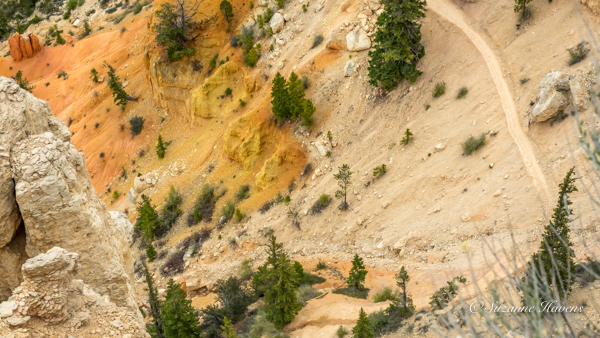
The cream, gold and orange-colored sand washing away from the sandstone is punctuated by the tenacious trees. A trail looks like it would make for a precarious hike
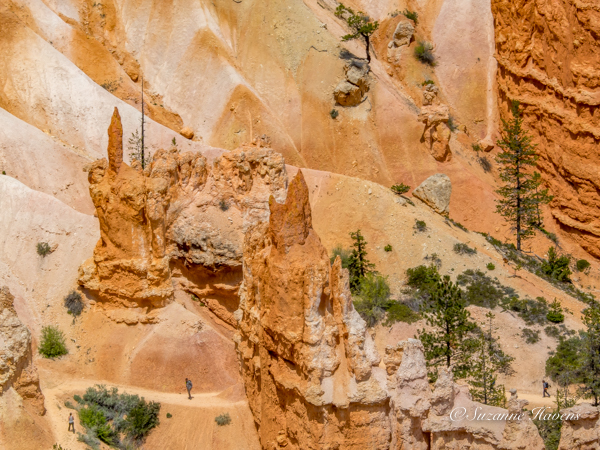
A closeup of hoodoo with sharp points, resembling pointed hats. The trees resemble spears. Note the hikers on the sandstone trails
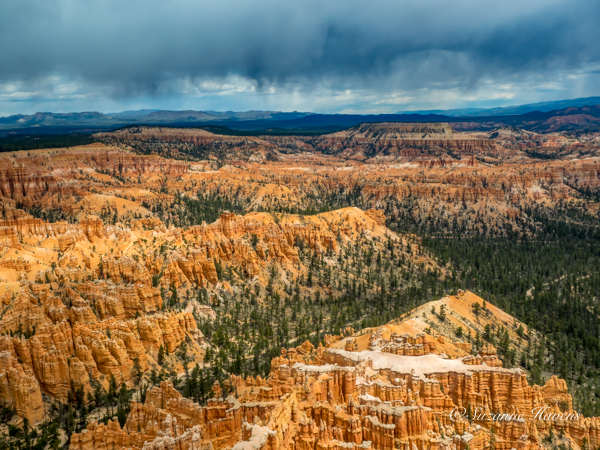
The dramatic rainclouds hover over the blue mountains in the distance, contrasting with the orange canyon and evergreens
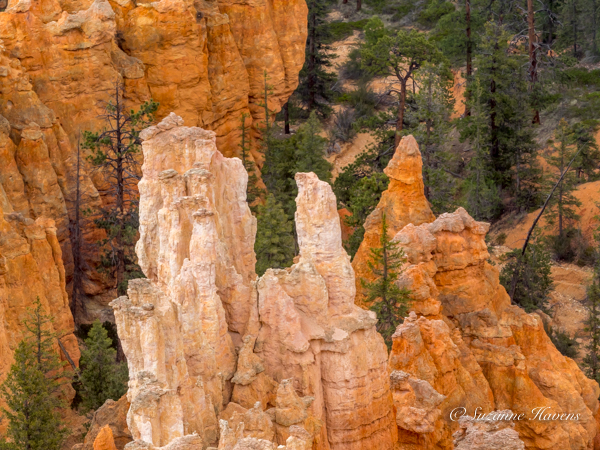
The hoodoos remind me of sand castles we built on beaches in Michigan and Florida, but I never saw sand in these colors

Purple rain softens the layers of colors and seems to bridge the spiky forms in the foreground with the mounded forms in the center
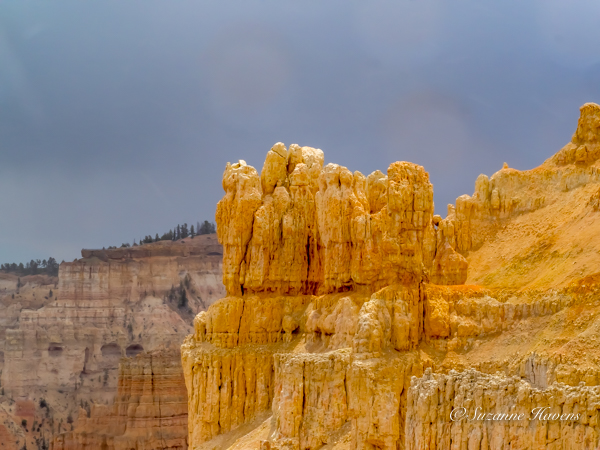
Brief moments of sun on the wet sandstone lit up the golden tones and forms a contrast with the creamier colors of the rock walls and sky
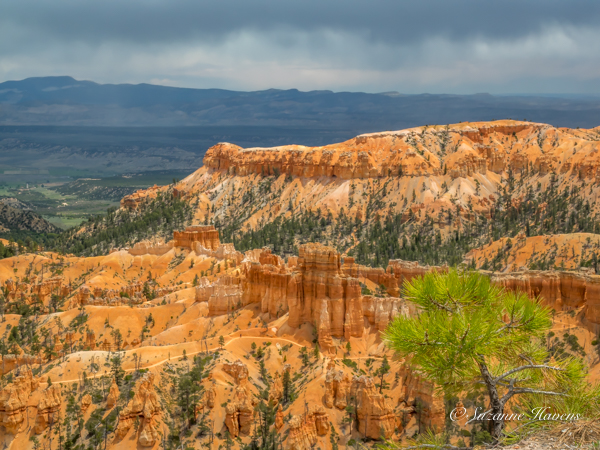
The sharp, yellow-green of the evergreen in the foreground, the sandstone trails snaking their way through a city of castles, a higher formation, a fertile valley, with a mountain range in the distance, topped by purple rain–a grand vista!
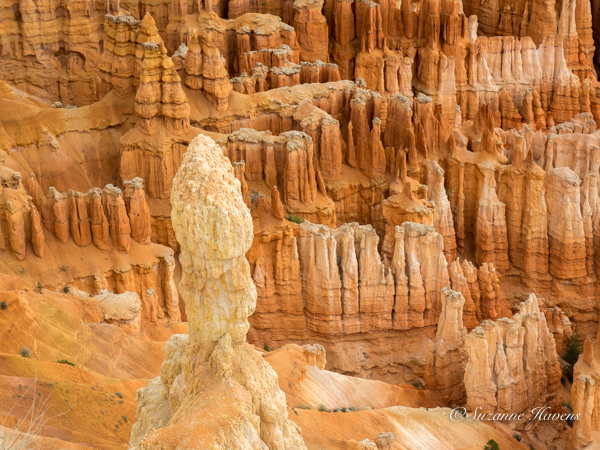
This hoodoo reminds me of the conductor of the symphony –rows of attentive musicians playing in harmony. Or perhaps it is a pontiff with the cardianals

Horseback riders pause to take in the view of sand dunes around the sandstone structures and trees struggling to survive
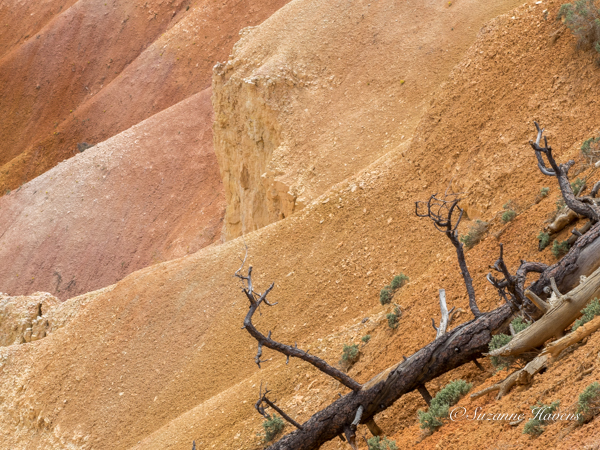
This image somehow haunts me: the dead tree and limbs that have succumbed, the stone that has become sand again, the waves of colors
This is but a small sample of the photos I made on this trip to Zion National Park. Each time I look at them I am reminded of the beauty that has been entrusted to our care. I was impressed by the use of shuttle busses through the main canyon. They managed the car traffic and helped visitors to be able to see many sights without having to sit in traffic, find parking places and make the drivers miss out on the spectacular scenery. They ran so often that visitors don’t have to spend long periods waiting. The shuttles make our time in the park more enjoyable. The multiple visitors’ centers allow many teaching opportunities and a chance to sit and watch short movies in between hikes.
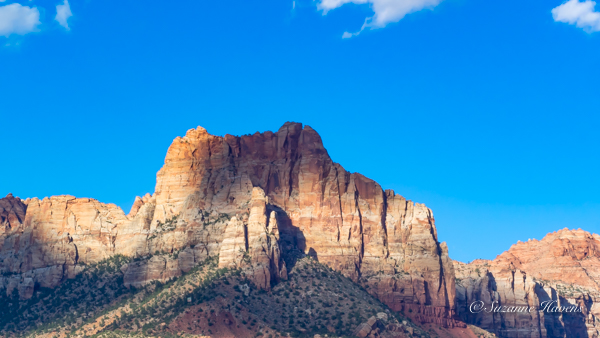
Late afternoon view of rocks behind our hotel just outside of Zion National Park as clouds create areas of shadows over the rock face
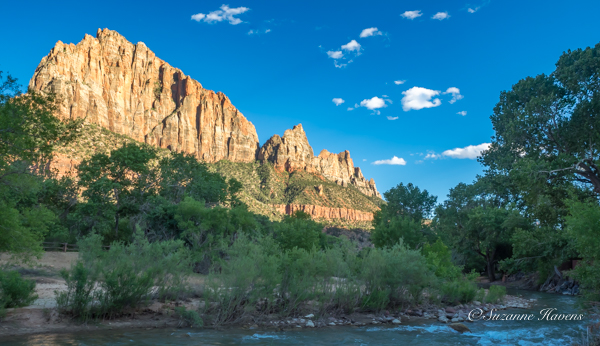
Walking in the shady canyon where the Virgin River flows strongly with ice melt, the Zion canyon walls catching the sun
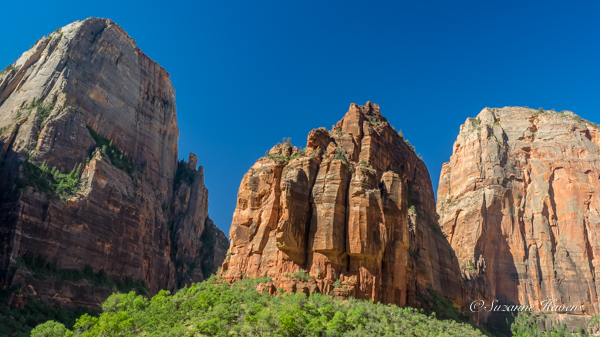
The rhythm of the three rock formations with their dark, medium, and light luminance, contrasting strongly with the green foliage of the trees (growing despite the difficult conditions) and the clear blue sky dramatize the enduring beauty of this canyon
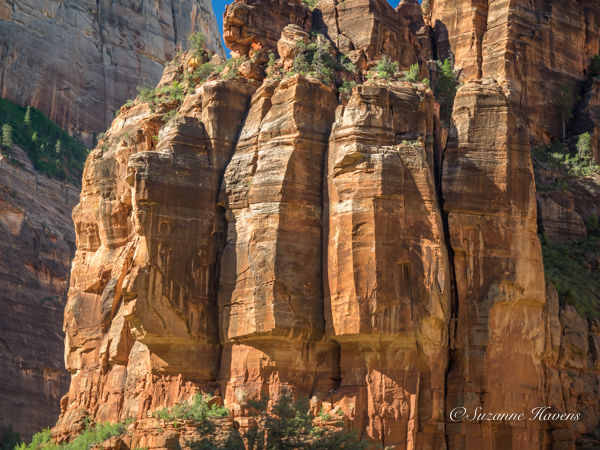
A closer view reveals color withn color of the rocks, the layers formed over great periods of time, thrust up by pressure underneath, then chiseled by the erosion from wind, water, and ice
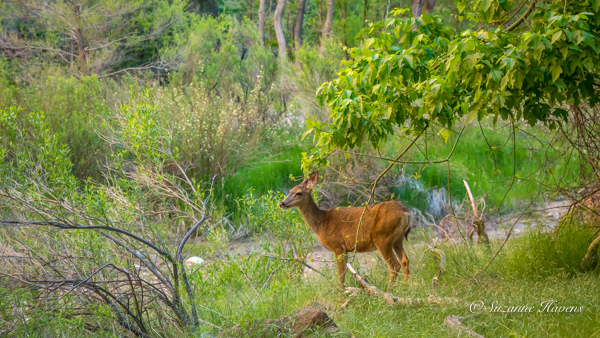
A deer pauses in its foraging to check out its surroundings. Does the deer enjoy the beauty as we do?
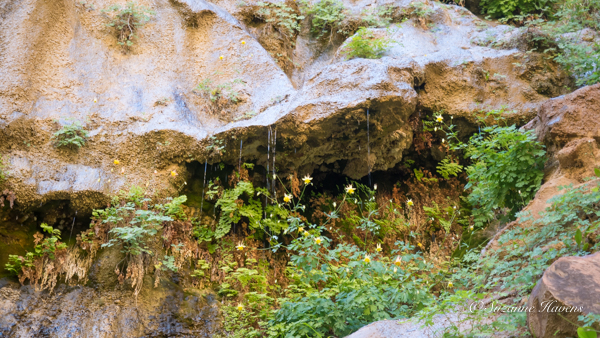
Columbines and other flowers cling to the rocks and receive water that flows down the rock face. These are called hanging gardens
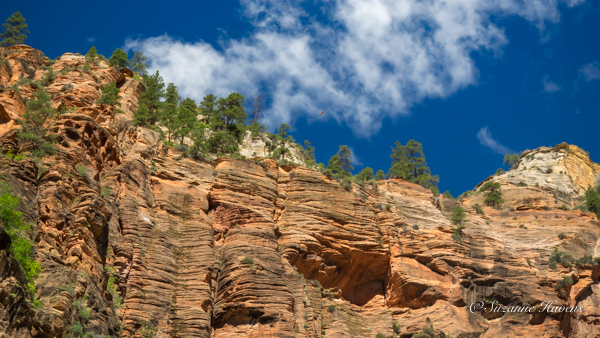
Oranges, browns, creams, and golden hues in patterns carved by water and wind; the bird flying lends a sense of the immensity of this place

Hiking up the side of the canyon then looking down where a waterfall wets the grasses and rock reminds me of Japanese gardens
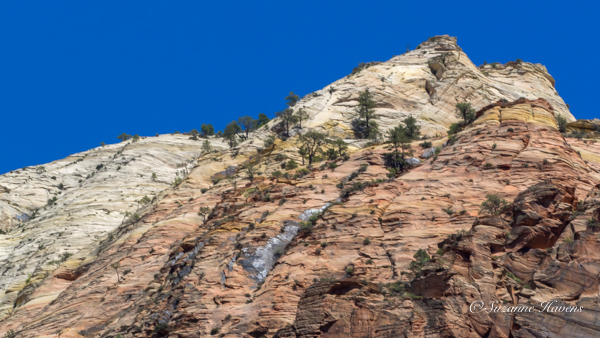
Snow sits in the crevices of the rock in late May. The horizontal and vertical lines across the changing colors reminds me of a very rugged checkered cloth.
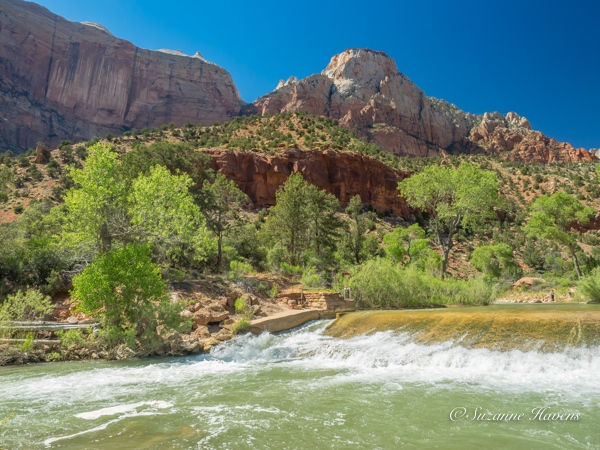
We found the pool where we swam nearly 41 years ago. In July the water was warm and the air temperature was about 100 degrees
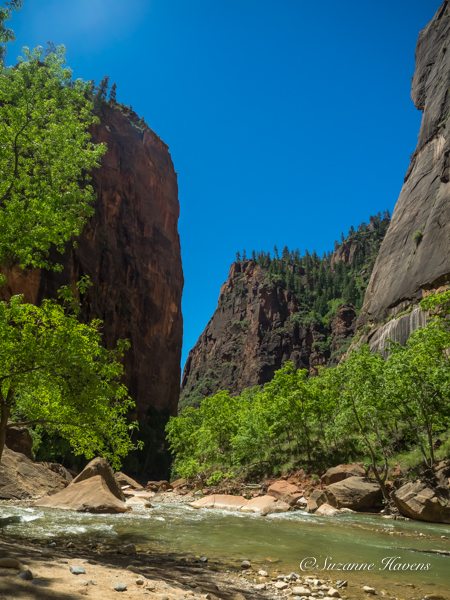
The canyon walls get closer together, but the river is rushing so strongly that the trail is closed to keep us safe. Here the rock is dark brown and grey as well as orange. Boulders in the river lie as testament to the rock face giving itself away
Traveling along scenic highways 160 and 89, we visited un-named rock formations as well as the Wupatki and Sunset Crater Volcano National Monuments. Early in the morning the sun shone then clouds built. A cold rain storm accompanied us and painted the clouds in the colors of bruises and saturated the orange sedimentary and black volcanic rocks. It reminded me of a visit to Pompeii on a rainy day, where a community was engulfed in an volcanic eruption.
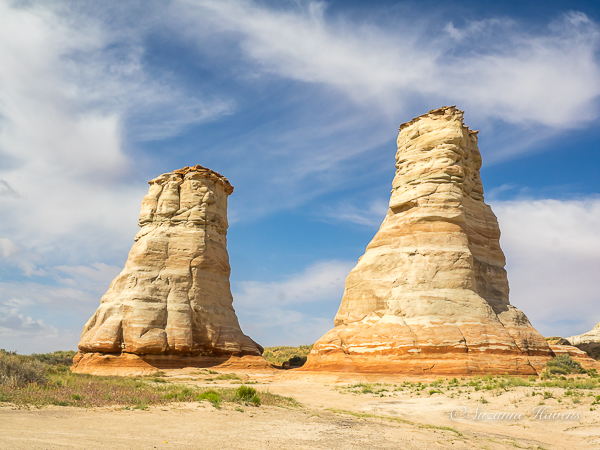
In Northeastern Arizona along the scenic highway160 two sandstone towers emerged from the grasslands. I was puzzled that there was no sign, naming them.
Traveling across the mesa, the Valley of the Gods abruptly touches it. Descending on a narrow, unpaved road with multiple tight switchbacks we hoped we wouldn’t encounter a vehicle too big to clear a switchback. Dust obscured the view of the road. Despite the treacherous road we were again mesmerized by the views of the valley. We had been here on our honeymoon, on a hundred degree day in July with no air conditioning. This time the air was cool and we drove in relative comfort and it was late afternoon with a storm approaching. The sky was dramatic and mercurial. I exposed the camera to the sandblast and hoped the seals are as tight as advertised.
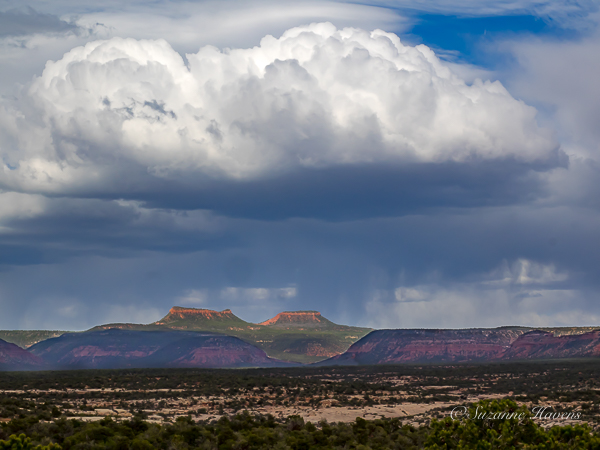
The land area of Bears Ears National Monument in southern Utah could be reduced by 95 percent depending on the U.S. Congress
The area in Southwest Colorado and Southeast Utah is rich in history of the ancient Pueblo people and amazing natural beauty. I hope by sharing thee glimpses that more people will come to respect and protect these lands held sacred by people who came before the Europeans.
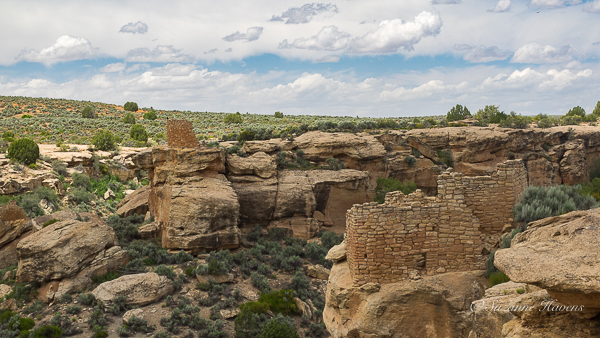
This ancestral Pueblo village was built on and under the canyon rim north of the San Juan River. These ruins have survived for over 700 years. The pioneering photographer William Henry Jackson first used the name of Hovenweep in 1874. In Ute/Paiute Hovenweep means deserted valley.
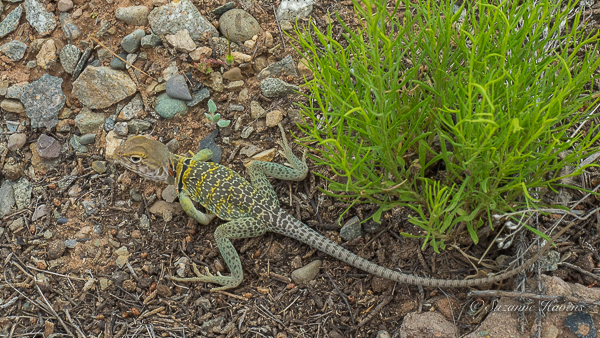
This collared lizard has a beautiful palette of colors that blends in with the plants and the surrounding rocks and stones
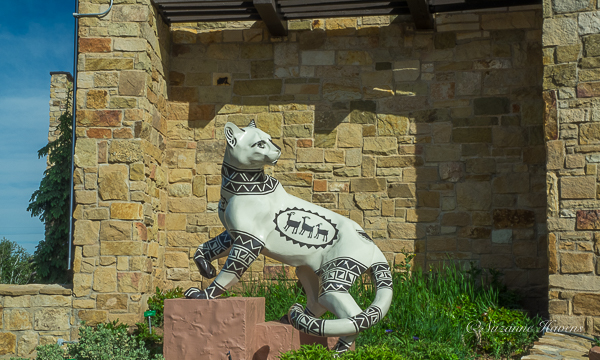
This sculpture welcomes visitors to the Anasazi Heritage Center. The word Anasazi means the ancients in Navajo, but because the ancients are ancestors of Pueblo people, Navahos, and other tribes, the name is not used as often as Ancient Pueblo people
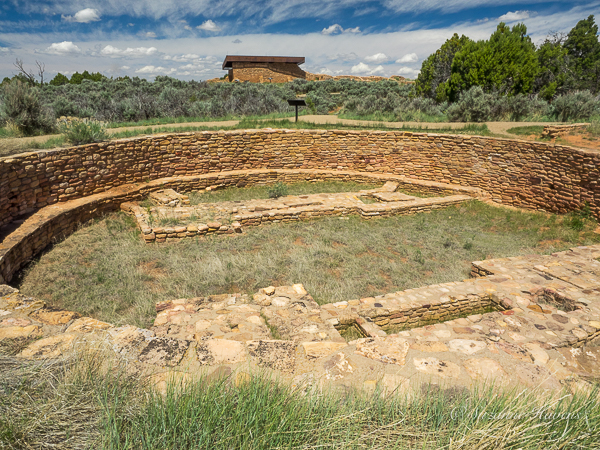
The Great Kiva foundation at the Lowry Pueblo within the Canyons of the Ancients National Monument resembles the kivas at Chaco in New Mexico and nearby Mesa Verde.
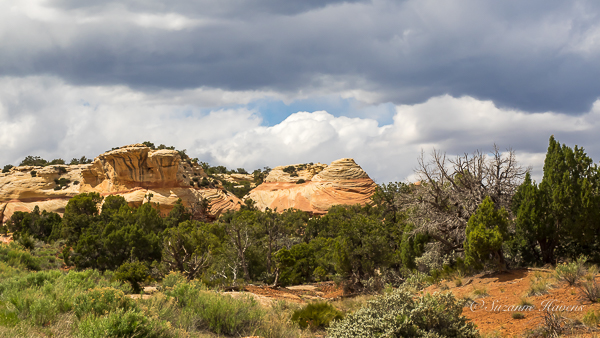
The wind and rain have sculpted the orange and cream-colored rock into forms that I associate with ice cream and frosting with clouds as whipped cream
The rugged lands of New Mexico demand talent and resilience to cultivate them. That is true for the Chaco culture a thousand years ago and true today with our current tools. Starting in the early 20th century significant efforts have unearthed 2,000 dwellings and restored some so that we can see the remnants of a complex community, harnessing the canyon waters to cultivate crops. Current thinking is that a prolonged drought motivated them to seek a new home, but some say this is part of a migration that brought them from Asia and took them farther south.
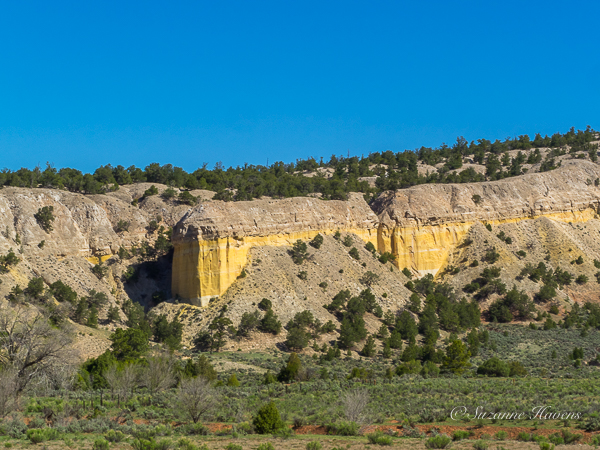
The yellow and cream colors of sediment uplifed and now eroding make a beautiful pallette with the vivid blue sky and the green foliage
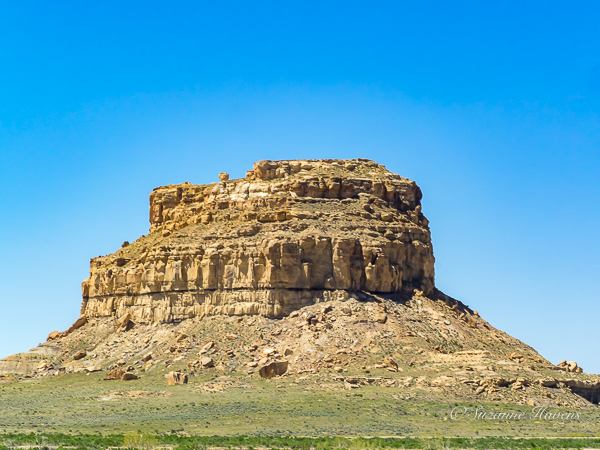
Fajada Butte gets its name by its banding of black coal between the Cliff House Sandstone on top and the older and softer Menefee Formation below, which erodes and causes large bolders to collapse
